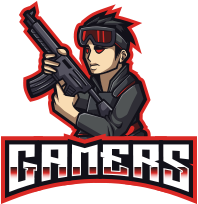Shinobi: Art of Vengeance rides a fine line between traditional action-platformer and Metroidvania, where players need to backtrack to collect important items they missed the first time. Although LizardCube’s modern revival of the franchise presents itself as a fairly straightforward, linear adventure, it has enough to offer players that one play through a level likely won’t net them every collectible and secret. As such, Shinobi: Art of Vengeance is best treated as a semi-linear experience that rewards players for revisiting stages they have already completed.
Players just looking to finish Shinobi: Art of Vengeance‘s main campaign may not need to worry about replaying stages, since all the required tools for beating the game will naturally be obtained by finishing a level. However, for players looking to 100% every level in Shinobi: Art of Vengeance, replaying a stage is almost a forgone conclusion. Try as they might, it’s almost impossible for players to find everything hidden in most stages on their first run, meaning backtracking later in the game will be the norm for completionists.
Shinobi: Art of Vengeance Stages Are Made to Be Replayed
Shinobi: Art of Vengeance Offers Players Some Freedom in Choosing Stage Order
Despite its relative linearity, Shinobi: Art of Vengeance offers players a surprising amount of freedom when it comes to choosing a stage to play from the main menu. As players start to unlock new chapters, they will find that Shinobi gives them the option to choose which stage they play from a given group. This design choice allows a limited amount of freedom in how players choose to progress Musashi’s journey, even allowing them to quit out of a stage that may be too difficult and try another one.
Moreover, players can expect most stages in Shinobi: Art of Vengeance to yield a new Ningi, unlocking a new traversal skill to help them progress through the level. The order in which players unlock Shinobi‘s Ningi skills can vary somewhat depending on which stage they choose to play when given the option between multiple choices. As a result, many of Shinobi‘s stages are designed non-linearly, with some areas inaccessible unless players have already unlocked a certain Ningi, meaning players may need to go back to replay a stage once they’ve earned the correct skill to bypass the roadblock.
Shinobi: Art of Vengeance makes it fairly easy for players to exit a stage and re-enter at any point by allowing them to start an in-progress or completed stage from any of its checkpoints.
Fully Completing a Stage Requires Players to Revisit with the Right Tools
The most important Ningi for fully completing every stage in Shinobi: Art of Vengeance are:
- Ninja Claws
- Canon Punch
- Ninja Hook
- Sword Dive
It will be clear when a section of a stage requires a Ningi to overcome it, with yellow walls or floors requiring the Canon Punch and Sword Dive, respectively. Players may also notice some walls coated with a similar yellow pattern that can only be gripped once the Ninja Claws have been obtained. The Ninja Hook is one of the most useful Ningi, as it allows Musashi to grapple to certain locations and reach high areas that can’t be accessed otherwise.
Often, players will find Shinobi: Art of Vengeance‘s collectibles hidden behind areas that require Ningi to access. Oboro Relics are a common hidden collectible, as are special stages like Elite Squad fights and Ankou Rifts, all of which must be obtained or completed to 100% a level. Players left missing secrets after defeating the boss of a level may simply need to come back once they have more Ningi and hunt for the remaining collectibles.
#Art #Vengeance #Stage




